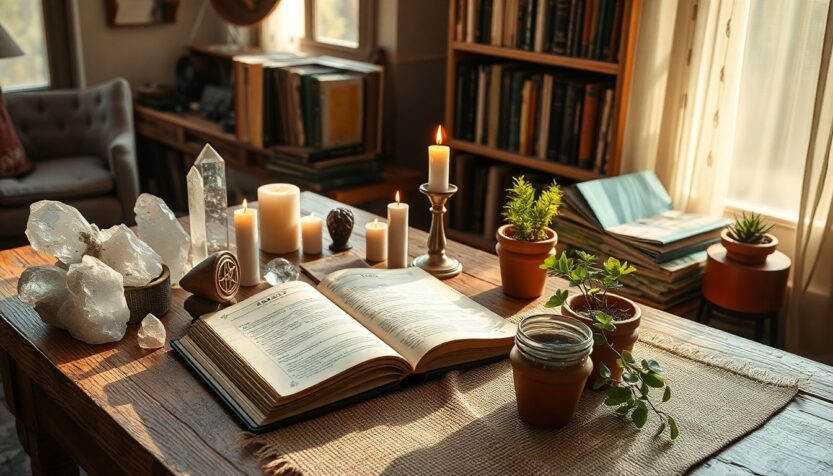Witchcraft has fascinated people for centuries, evolving alongside cultural shifts and technological advancements. A new wave of practitioners, such as the Etsy witch, has gained popularity through social media platforms like Instagram. The emergence of ‘witch influencers’ around 2018 introduced a modern interpretation of ancient practices, sharing everything from crystal healing tips to Full Moon rituals in engaging video formats and vibrant infographics.
To grasp the contemporary significance of witches, it is crucial to explore their history. In ancient societies, wise individuals served as healers and advisors, utilizing folk magic for various purposes, including addressing ailments, promoting agricultural success, and invoking favorable weather. Ironically, these figures were also called upon to protect against the perceived dangers of witchcraft.
The dark past of witchcraft and its revival
Unfortunately, the 16th century marked a grim period of witch hunts, driven by a fervent Christian ideology that vilified wise women and men. Accusations of witchcraft led to widespread persecution and tragic executions, with events like the Salem witch trials representing a dark chapter in history. This frenzy stemmed from a societal obsession with the devil’s influence and a desire to eliminate perceived threats.
Fast forward to the mid-20th century, and we see a revival of the term ‘witch’ through the burgeoning Wiccan movement in the United States and the United Kingdom. This resurgence coincided with feminist and goddess consciousness movements, allowing many to reclaim the identity of a witch. However, it is essential to respect individual preferences regarding this term, as it carries unique meanings for different people.
Types of witches in today’s society
The concept of witchcraft has long been associated with those on the fringes of society—individuals who are often misunderstood or labeled as different. As witchcraft gains popularity, it diversifies, allowing for personal interpretation and adaptation. A simple scroll through WitchTok reveals a variety of witchcraft styles, blending traditional practices with modern wellness approaches. Here, we explore various types of witches and their meanings.
Coven witches
Members of a coven typically work collaboratively, often led by a high priestess. Together, they harness their combined magical abilities to cast powerful spells and manifest collective intentions. This group dynamic emphasizes the ceremonial and ritualistic aspects of magic, fostering a strong sense of community.
Solitary witches
In contrast, solitary witches prefer to work independently, crafting their magical journey without external influences. They may adhere to a specific tradition or blend various practices, tailoring their approach to suit their personal beliefs.
Specialized witchcraft practices
Among the diverse witchcraft practices, some individuals possess a profound connection to specific elements. For instance, hereditary witches inherit their gifts and knowledge through family lineage, similar to the characters depicted in *Practical Magic*.
Crystal witches focus on the energies of stones and crystals, using these natural elements to amplify their intentions and manifestations. Those drawn to the beauty of crystals and who enjoy creating energy grids may identify with this type of witch.
Cosmic witches delve into astrology and astronomy, channeling celestial events to enhance their magical workings. They possess knowledge of astrological signs and actively manipulate energies to create desired outcomes, rather than merely observing the stars.
Nature and healing-focused witches
To grasp the contemporary significance of witches, it is crucial to explore their history. In ancient societies, wise individuals served as healers and advisors, utilizing folk magic for various purposes, including addressing ailments, promoting agricultural success, and invoking favorable weather. Ironically, these figures were also called upon to protect against the perceived dangers of witchcraft.0
To grasp the contemporary significance of witches, it is crucial to explore their history. In ancient societies, wise individuals served as healers and advisors, utilizing folk magic for various purposes, including addressing ailments, promoting agricultural success, and invoking favorable weather. Ironically, these figures were also called upon to protect against the perceived dangers of witchcraft.1
Modern witchcraft’s diversity
To grasp the contemporary significance of witches, it is crucial to explore their history. In ancient societies, wise individuals served as healers and advisors, utilizing folk magic for various purposes, including addressing ailments, promoting agricultural success, and invoking favorable weather. Ironically, these figures were also called upon to protect against the perceived dangers of witchcraft.2
To grasp the contemporary significance of witches, it is crucial to explore their history. In ancient societies, wise individuals served as healers and advisors, utilizing folk magic for various purposes, including addressing ailments, promoting agricultural success, and invoking favorable weather. Ironically, these figures were also called upon to protect against the perceived dangers of witchcraft.3
To grasp the contemporary significance of witches, it is crucial to explore their history. In ancient societies, wise individuals served as healers and advisors, utilizing folk magic for various purposes, including addressing ailments, promoting agricultural success, and invoking favorable weather. Ironically, these figures were also called upon to protect against the perceived dangers of witchcraft.4






